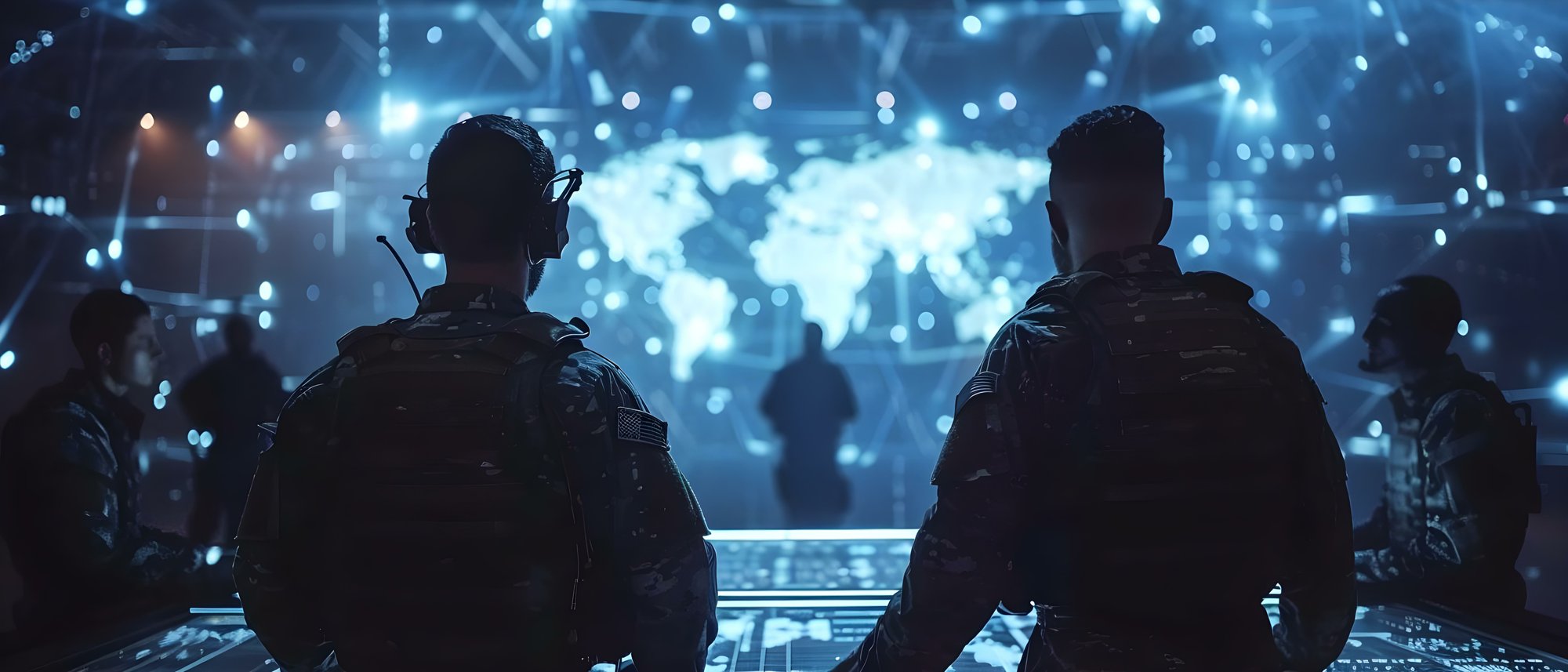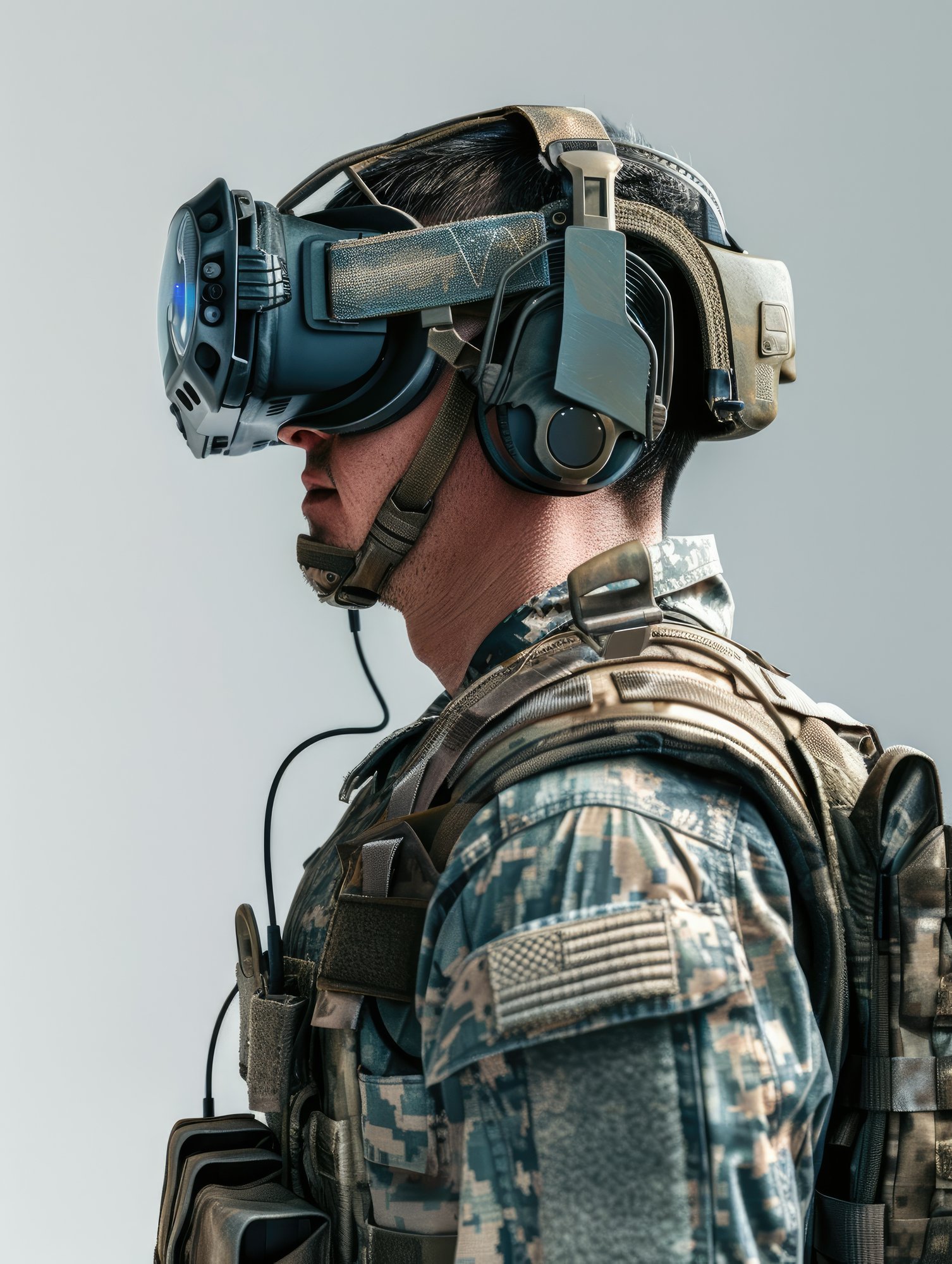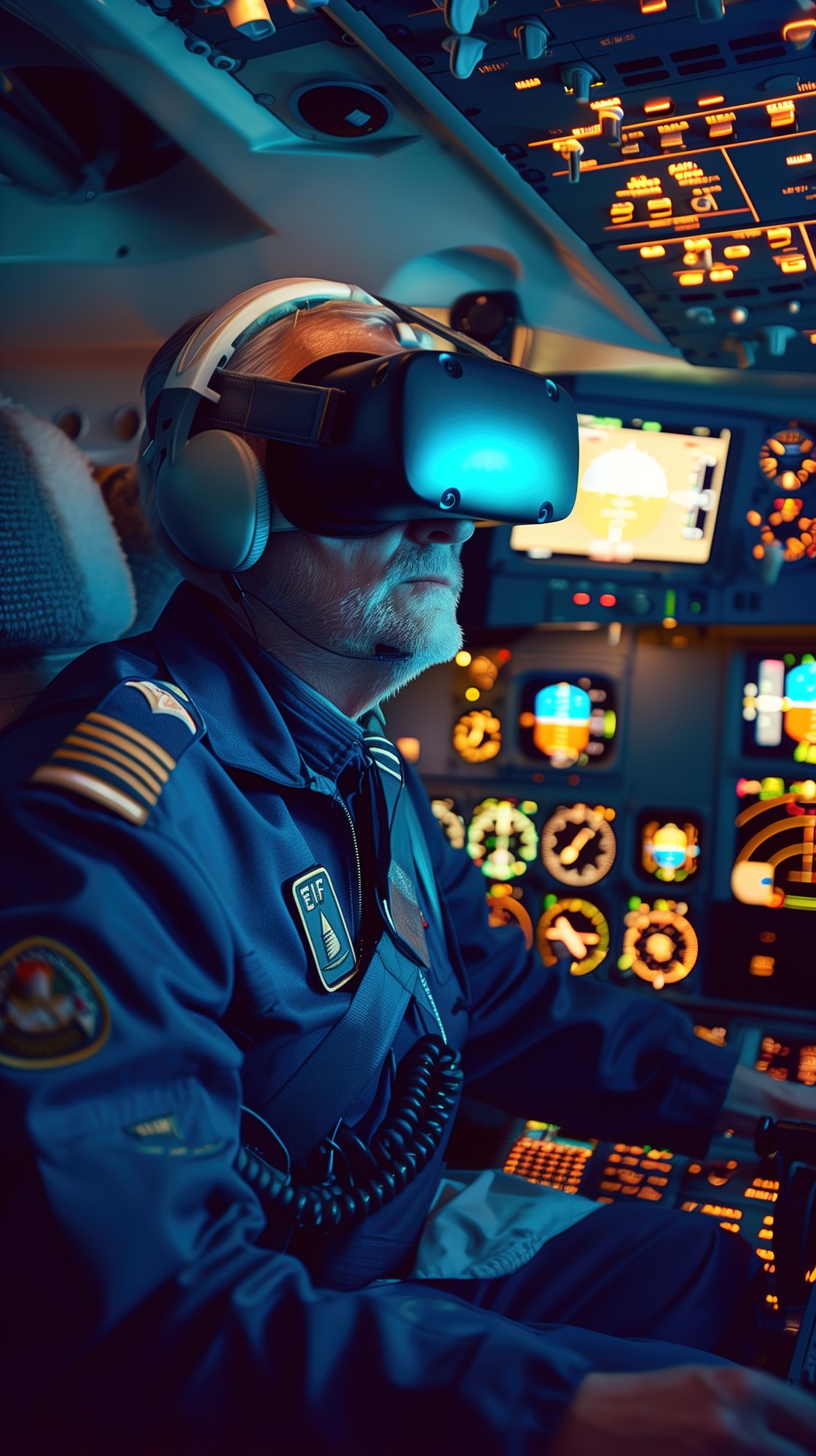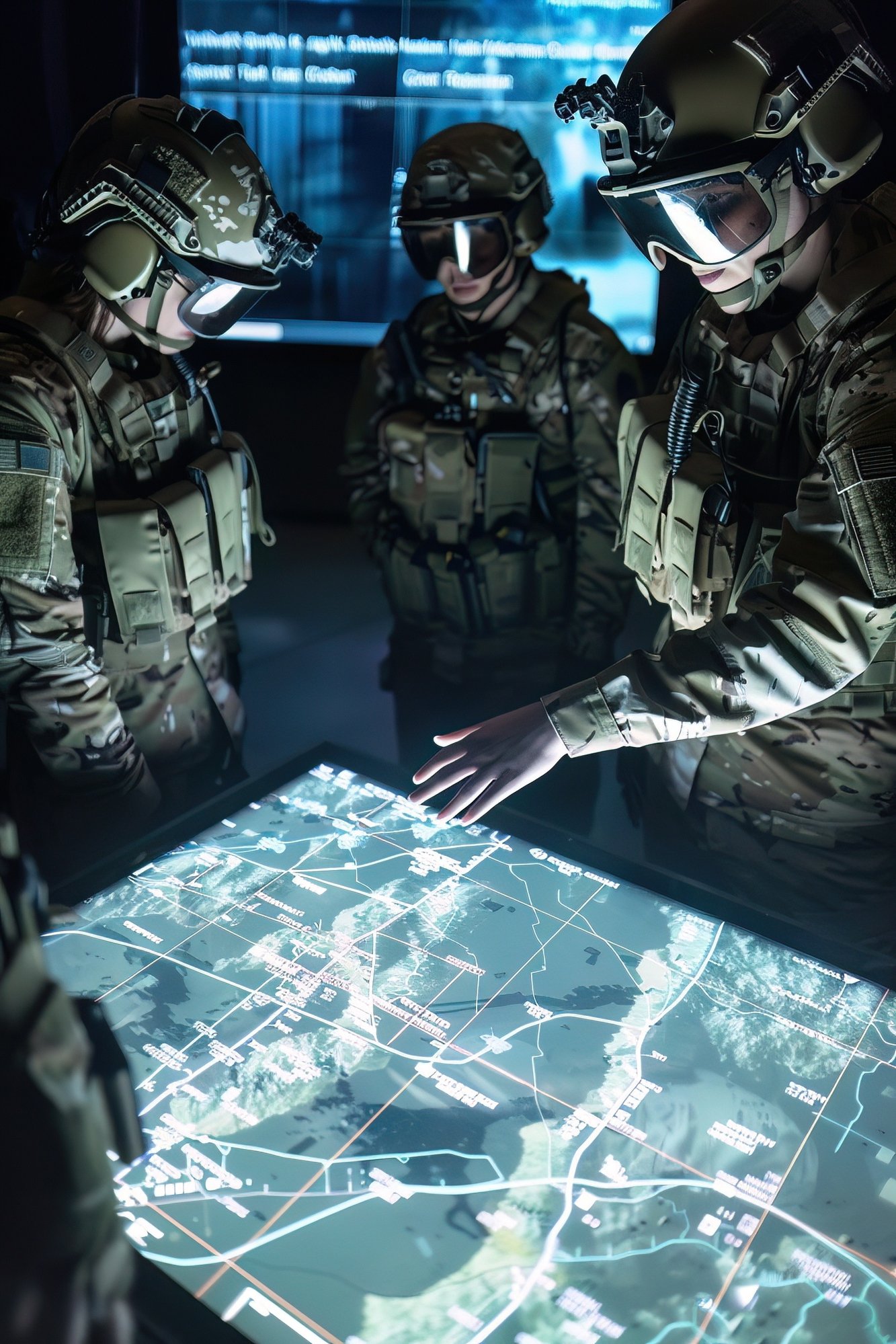Modeling, Simulation, & Training Innovations
As warfighting technologies have advanced, military preparedness has become more vital than ever.
Traditionally, training exercises have relied on live-fire drills, field maneuvers, and classroom instruction to simulate real-world scenarios. However, traditional practices can’t fully replicate the diverse range of scenarios and conditions encountered in modern warfare.
To stay ahead and respond to emerging threats, armed forces worldwide rely heavily on advanced technologies & methodologies. Among these, modeling, simulation, & training (MS&T) are ideal tools for preparing our military force and ensuring the highest human performance more quickly, safely, and cost effectively.
Table Of Contents
Table of Contents
1. Understanding Military Modeling and Simulation
Although many consider modeling and simulation technology a recent idea, its history goes back many centuries. A key innovation setting the stage for today's military simulation is the Antoinette Barrel from the early 1900s. This human-powered, low-tech flight simulator was built from two half barrels sitting on top of each other. Instructors moved the contraption with poles to represent air disturbances, and the pilot counter-steered to stabilize the flight.
Simulation technology took a leap forward in the 1920s with the Link Trainer. Initially used most often as an amusement park ride, it made its way into the Army Air Corps a decade later and was critical for pilot training during WWII.
Of course, major technological advances over the past century have empowered a wide variety of industries to use modeling and simulation for training.

As early as 2007, Congress declared modeling and simulation was a National Critical Technology. Today, military modeling and simulation are core to the Department of Defense (DOD) training efforts.
Military Modeling
Modeling relies on representations of the real world as a means to analyze, plan, and prepare, typically for designing and evaluating systems and processes that may be difficult to assess otherwise.
In a military application, modeling replicates battlefield conditions, assesses the performance of equipment and personnel, predicts outcomes, and optimizes resource allocation. It allows for the testing of hypotheses with or without physical simulations and live training.
Models use data analytics and predictive algorithms to give insight into the movement of forces, weather effects, outcomes of different decisions, and other circumstances. Today, virtual models of the battlefield, equipment, military teams, and external factors are central to military simulation training. .

Military Simulation
Training for real-world military scenarios is problematic and usually comes with high risk and high cost. Simulations mitigate these challenges by conducting scenario-based planning and military training to evaluate effectiveness with limited risk.
Cutting-edge simulation technologies do more than mitigate risk. They also allow for interactive learning, enabling troops to refine their skills, test new tactics, and adapt to evolving threats in a safe and controlled setting.
There are different types of simulations:
- Live simulations include military teams using real equipment and weapons systems, allowing personnel to experience physical aspects they may encounter on the battlefield.
- Virtual simulations include human interactions with simulated equipment or systems and rely on extended reality systems (XR) for virtual or augmented terrain, environment, enemy forces, and other elements.
- Constructive simulations eliminate the human element, using computer-generated elements exclusively.
Military simulation training typically integrates components from all three types of simulations to create a realistic and comprehensive training environment.
Military Training
Modern military training has evolved dramatically. Today, it often includes the practical application of modern modeling and simulation techniques, such as flight simulations for pilots, virtual battlefield exercises for infantry units, cyber warfare drills for cybersecurity specialists, or more expansive and all-encompassing training exercises.
Modeling and simulation training improves military human performance by combining LVC simulation within a Synthetic Training Environment (STE).
The STE is an integrated digital twin training environment that uses LVC to provide a more realistic and immersive training experience. Training is managed in and by the STE, and participants access the same physical environment, training parameters, and exercise goals. The STE is a training management system that tracks and manages soldiers' training data.

2. Advantages of Modeling, Simulation, & Training
By immersing trainees in realistic scenarios, DOD modeling and simulation training facilitates experiential learning, fosters teamwork, and cultivates the critical thinking skills necessary for success in high-pressure situations.
Cost Efficiency
Consider the average cost of an F-35 fighter jet. Maintenance and repair have their own hefty price tag, and at around $110 million to produce a new plane, there are financial risks each time the fighter takes to the sky.
It isn’t just the replacement cost of valuable equipment that needs to be considered. Training in a traditional manner can be quite expensive. Returning to a fighter jet example, the operational cost per flight hour of an F-15EX is now “only” $29,000. Training strategies that include defense modeling and simulation solutions replace a portion of that cost and also deliver the benefit — beyond the dollars — of adaptable training beyond the confines of risk and cost.
Risk Mitigation
Even “routine” live training missions come with risks, and replicating dangerous scenarios increases the risk of putting equipment or personnel in harm's way. Mechanical failure can lead to pilot injury or death, as well as injury to civilians on the ground.
Clearly, our forces need hands-on training, and that won’t change. However, modeling and simulation training reduces the risk of injury or death, equipment loss, and collateral damages through iterative practice in safe surroundings.
Military Performance Optimization
Perhaps the most critical benefit of simulation training is military performance optimization. In a ScienceDirect article, Beckner et al., 2021 reported that “80–85% of military accidents are the result of human error, stemming from fatigue and decreased cognitive performance.” Training that prepares military members for physical demands combined with the cognitive load and operational stress on the battlefield is critical.
Innovative military modeling and simulation technologies also deliver the benefits of:
Networking in Simulated Exercises: Current technology allows pilots and crews to network during simulated exercises through advanced communication systems and networked simulators.
Training as a Full Team: As technology advances, training will move beyond unit-based simulations and eventually reach joint coalition training.
Establishing Trust through Simulation Training: Simulation training helps establish trust between warfighters — within our own forces and with our allies — by providing realistic scenarios for teamwork, communication, and decision-making in a safe environment.
Adaptability
Modeling, simulation, and training platforms, on the other hand, are flexible and adaptable, making them ideal tools for reducing overall risk. Customized scenarios can be developed to meet specific training objectives, including opportunities to practice physical activities under increasing challenges to build muscle memory, mitigate the effects of stress, and increase cognitive resilience.
Additionally, traditional training exercises can become routine because they lack the variability of a real battlefield. Modern technology provides the opportunity to adapt training to a variety of scenarios and include components beyond combat, such as logistics and cyber warfare.
.jpeg?width=2000&height=1338&name=AdobeStock_559242567%20(1).jpeg)
3. Challenges in Modeling, Simulation & Training
The incentive to advance modeling, simulation, and training technologies is high, but it is dependent on an understanding of objectives and alignment between each branch of the military, the defense industry, and academia.
Some of the barriers range from the risk-averse nature of our military and government to data security and the pace of military acquisition.
During a recent conversation with James Cooper, Director of Business Development at Design Interactive, Inc. and Director of Communications & Membership at the Central Florida Chapter of the National Defense Industrial Association, he said, "The government's acquisition process does not keep pace with the rapid rate of innovation. As technology advances, it often hits what we call the valley of death — the place where innovation takes us but the transition to adopt the technology fails.”
Three significant challenges must be overcome to deploy widespread use of advanced technologies for military training. These were identified and explained in the 2020 A New Approach to the Modeling, Simulation, and Training (MS&T) Research Agenda report and remain today as core challenges for the science of modeling and simulation.

1. Multi-Scale Simulation
When simulating a system, differing levels of granularity need to be addressed. In some cases, the big picture is sufficient; while in other cases, fine details need to be simulated.
One of the primary challenges in military simulations is integrating systems that operate at different levels of detail. For instance, multi-echelon battle simulations must seamlessly incorporate detailed aspects such as individual combatant actions, equipment damage assessment, and troop movements across various fronts.
Furthermore, these simulations need to accurately model the complex interactions, including the effects of external factors like dangerous weather systems, on critical operations such as bomber missions supporting the battle.
The challenge then extends to developing a solution that limits unnecessary constraints and assumptions on what can be represented in the model, handles different levels of complexity and detail, and can be effectively managed in terms of preparation, processing power, and simulation management.
2. Verification & Validation
Another challenge is how to check and confirm the simulation itself, known as verification and validation. Verification is the need to confirm that the simulation model was created according to the conceptual model with no bugs or errors, and validation is the process of determining if it accurately represents reality.
The simulation development process is time, labor, and resource-intensive, requiring clear specifications and guidelines and sufficient data. Unfortunately, it’s often difficult to assess the simulation until the end of development, which can be problematic. In some cases, the simulation can even be disqualified only after it has been developed.
Recently, we spoke with David Stargel, Technical Director at the Air Force Agency for Modeling and Simulation (AFAMS). He pointed out that:
“We want to make sure that we're building a realistic network with realistic scenarios, but we also have to make sure that we have the right tools that allow us to analyze and understand them."
3. Verification & Validation
Although they have been around since the early 1900s, connecting simulators didn’t happen until 1992 with virtual simulators. This was followed several years later by connecting different types of simulators using heavily scripted scenarios.
However, today’s military modeling and simulation needs require the integration of multiple technologies, including live, real-world elements, virtual simulations, and computer-generated scenarios.
The challenge comes with integrating these disparate systems. With modeling and simulation technologies that may come from different vendors built with disparate terrain, time scales, etc., it’s essential that developers plan for seamless interactions with open documentation and communications with other developers.
4. Future Direction for Military Simulation Training
As technology continues to advance, emerging technologies such as artificial intelligence, virtual reality, and augmented reality hold the potential to revolutionize military training by offering even more immersive and realistic experiences. Military modeling and simulation are undoubtedly essential for maintaining a decisive edge on the modern battlefield.
What does the next five years hold?
According to David Stargel, the future of simulation technology holds promise for connecting tactical units such as logistics, supply chain, and command and control systems, enabling more realistic and comprehensive training exercises. However, he points out that the timeline for large-scale, multi-security level exercises depends not only on continued technology development but also on collaboration between different military branches.

Building the Future With UCF Tech Grove
Together, we can build the future.
Central Florida Tech Grove is a collaboration hub for industry, academia, and the military. As a collaborative development space, Tech Grove houses different pieces of military simulation equipment that can be used by those in industry and academia to demonstrate their innovations or continue development using those devices.
Are you ready to innovate and collaborate? See how Tech Grove can help you accelerate your technology development through our programs and events, which offer insights, education, collaboration, and connections in the military modeling, simulation, and training industry.
Have an innovation to share? Tell us about your capabilities here.
